
DS 9 long-term test
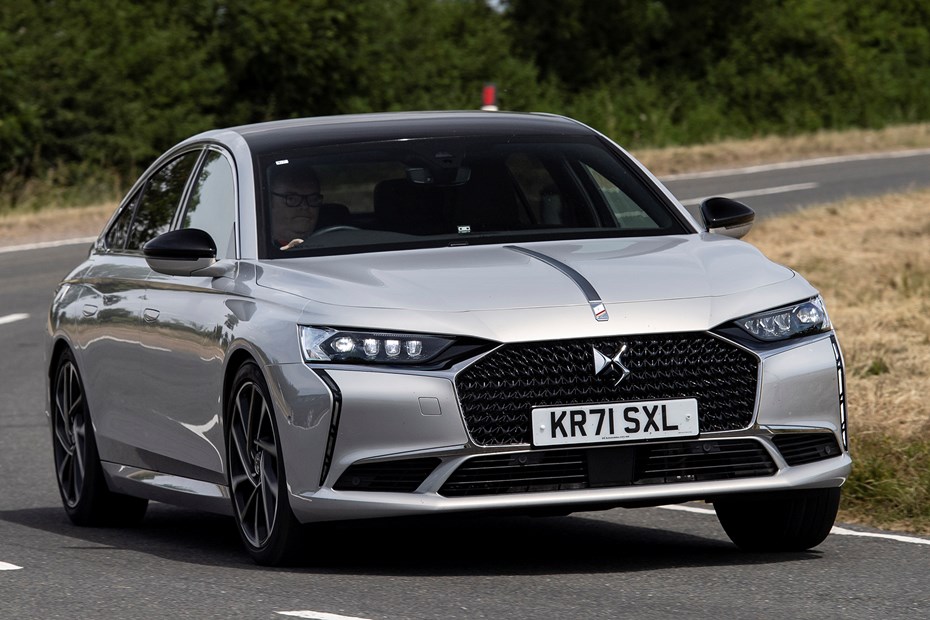
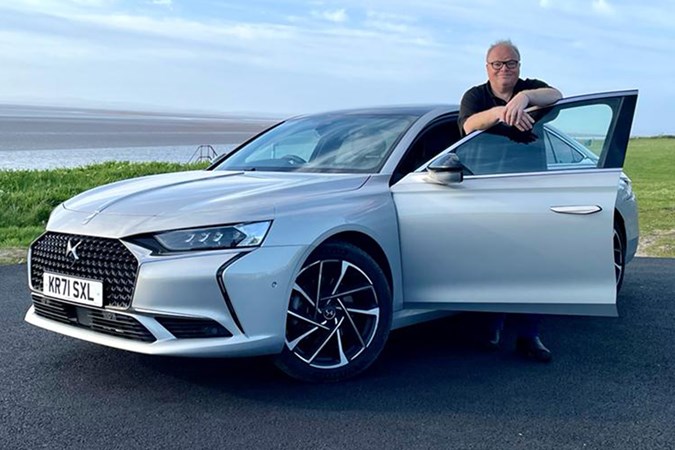
The DS 9 is an interesting and very French addition to the executive car ranks. But is it good to live with? We’re running a plug-in Rivoli+ version to find the answer to this question: Does this upstart have what it takes to tempt buyers out of their Audis, BMWs and Mercedes-Benzes?
Reports by Keith Adams.
Update 1: Welcome
Introducing the DS 9 Rivoli+ E-Tense
Welcome to the extended long-term review of the DS 9 Rivoli+ E-Tense. It’s fair to say that this executive saloon has sparked a fair deal of conversation within Parkers Towers – not least who it is aimed at, and whether it can overturn the French car industry’s tradition for producing unsuccessful and high-depreciating large cars.
There are an unusually high number of French car fans at Parkers, but I ended up being lucky enough to pick up the keys to our DS 9. This is good news, as a plug-in hybrid suits my lifestyle and as frequent long-distance trips are on the agenda, the car’s refinement and promised fuel economy make it a potentially winning partnership.
We’ve gone for the Rivoli+ E-Tense 225 model, which has a 13.2kWh battery pack allied with a 110hp electric motor and 180hp petrol engine. Maximum combined power at any time is 225hp, for a 0-62mph time of 8.3 seconds and a maximum speed of 149mph. Our 225hp version has already been superseded in the DS 9 range, with the 250 and 360hp E-Tense models, but most of our findings will stand true for the lower-powered version of the incoming duo.
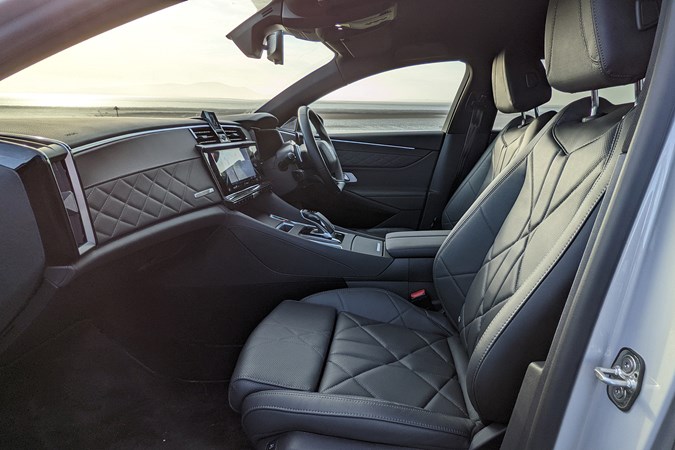
Full disclosure time. Our DS 9 came to us off the back of its maker’s demonstrator fleet, which means we’re its second owner and it had just over 6,000 miles on the clock when it first came to us. That’s no bad thing, because many people are now buying approved used cars with this kind of mileage and, in doing so, can save a pretty penny compared with the new cost.
Check out the DS 9 specs page on Parkers for the entire range – especially worth bearing in mind as not all trim packs are available with various powertrain options.
What you get with a DS 9 Rivoli+
Quite a lot, actually. As standard, our DS 9 weighs in at £49,200, which is serious money for a car coming from a relatively unknown brand. The Rivoli+ is a well-equipped all-rounder, but the main difference between models comes down to interior trim and exterior detail rather than mechanical. The Rivoli+ is biased towards luxury, so you get a leather interior and matching trim, but a range of option packs gets you the car you want. Here’s what comes as standard:
- 12.3-inch touchscreen for infotainment
- Cruise control and speed limiter
- Basalt Black grained leather seats with Basalt Black Diamond-shaped Nappa leather decor
- Heated, electrically adjustable, folding and auto dimming door mirrors with boarding spots and welcome logo
- DS Active Scan suspension
- Drive mode select
- Four-zone climate control
- Keyless Stop/Start system
- Lane assist
- LED ambient lighting
- LED headlights and daytime running lights
- Parking sensors front and rear
- 360-degree rear-view camera
- Satellite navigation system
- B.R.M R180 timepiece
- Massaging front and rear seats
- Heated and ventilated front seats
So, it’s not exactly short of equipment as standard. But despite that, my car comes with £3,700-worth of optional extras, which I’ll go through in the next update. There aren’t too many option packs to choose from, but if you’re in the mood for personalisation, it’s good to visit the DS 9 configurator.
Being a plug-in hybrid, I’m expecting strong fuel economy in conjunction with my home charger, although I’ll be amazed if I get anywhere near the fictional 257mpg claimed for this car when run in ideal conditions in official testing. My experience is that I’ll get brilliant fuel consumption in local runs to and from the office, and more realistic MPG figures when venturing much further.
First impressions are highly favourable, and although my original scepticism about the DS 9’s close relationship with the Peugeot 508 (and not something more in tune with its supposed Citroen DS heritage) remain, I have to say that it’s not a bad car to be closely related to as my long-term test of that car will attest.
The interior doesn’t look that special when you first get in – blame that on being specced in black throughout, but once you sit in it and start appreciating the quality of the materials, it very quickly grows on you. But all of my friends who have been in it so far have been impressed, especially with the rear seat massagers. It’s roomy too, with a six-footer fitting happily in the rear behind another six-footer – something that you could never say about the Peugeot 508 it’s based upon.
Over the coming months and thousands of miles, I’ll get deep under the skin of the DS 9 and regularly using Britain’s motorways to see if it really is possible to get diesel-like economy from this plug-in hybrid. I can’t wait – I’m a big fan of the way it looks and feels already – and I’m looking forward to performing a really detailed long-term test.
Update 2: Cabin, equipment and options
What’s the DS 9 like to spend time in?
Long story short – 1,000 miles in and the DS 9’s comfort and refinement are really winning me over. Helped in no small part by some carefully chosen options. But there’s a snag.
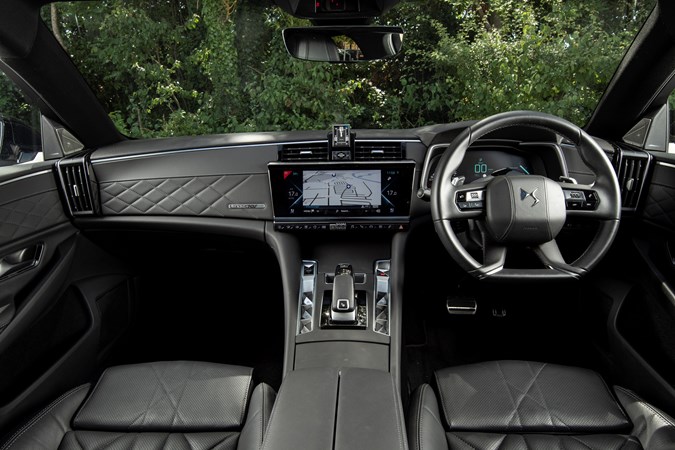
I’ve enjoyed a mix of local running on electric only, benefitting from my home charger, and long motorway runs, and the more time I spend in the DS 9, the more I like it. The seating position is low-slung, which I’m not a particular fan of, but it’s possible to get the relationship with the wheel and pedals absolutely spot on. And there’s no faulting the touch points – the wheel, dash controls and the seat facings are absolutely perfect. Soft, inviting and well finished.
Compared with an Audi A6 or BMW 5 Series, the DS 9 fares well in terms of material quality, and beats them both for ambiance. An E-Class is probably more inviting, though and as we’ll get to in a moment, there are some issues with the tech and infotainment.
Optional extras: are they worth it?
As I said in the introduction above, the standard equipment tally is fine, but there are a few optional extras fitted to this one. Here are my early thoughts on them – if I change my mind, I’ll let you know. Here’s what’s been added:
- Focal Electra premium audio: £990
Worth it… The standard set-up is okay, but I really like the way the Focal set-up in this car sounds. Punchy, clear and not overloaded with bass, it’s a system that flatters the electronic music I tend to favour listening to.
- DS Park Pilot: £700
Not worth it… I don’t live in a city, I don’t get on with how these systems work and you never really get anything back come sale time.
- DS Night Vision and 360-degree camera: £1,100
Not worth it… Anything to improve safety is a good thing, but in this case, the Night Vision is limited to the instrument screen, which takes your eyes off the road. However, I like how it screams a warning if it spots a person or animal on on the road ahead. As for the 360-degree parking set-up, I just don’t get it.
- Electric boot release with loaded arm access: £400
Worth it… Always nice to be able to open the boot with a ‘kick’ of your foot.
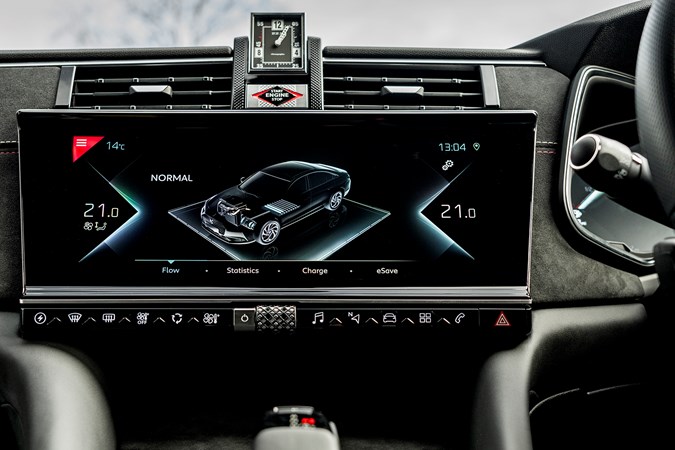
Infotainment and tech
Early impressions here aren’t so good. The infotainment set-up is pretty much the same as you’d get in a Peugeot 508, and although it’s functional and works with Apple CarPlay and Android Auto, it really does feel a long way behind its rivals in terms of features and performance. The screen isn’t particularly crisp and clear (with a particularly low-resolution rear-view camera), and it can take an absolute age to boot up when you turn on the car. So, a far from premium experience.
This is a real shame, because the infotainment in the DS 4 is so much better and delivers the premium experience you’d rightfully expect in the flagship DS 9. At least it has some physical shortcut buttons, though, so you’re not completely dependent on the touchscreen.
Other areas work well – the adaptive cruise control is excellent on the motorway, while the voice control also works well once you learn the commands. Overall, though, so far, it feels like this is the weakest link in the DS 9’s armoury.
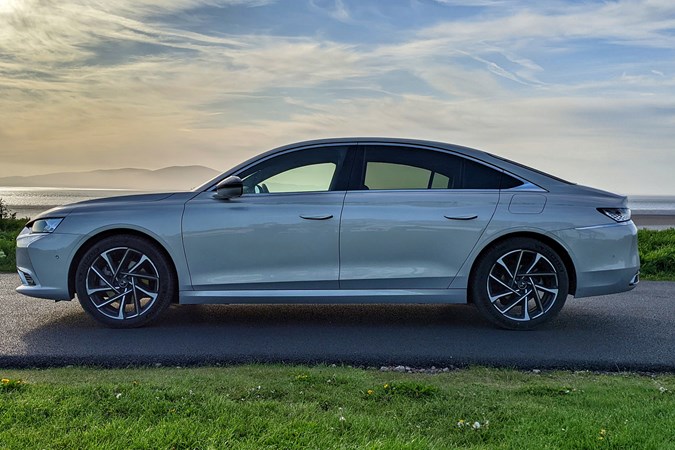
Update 3: Wonderful wedding transport
Keith’s lent the ‘9 to Gareth, who’s using it as a little limo…
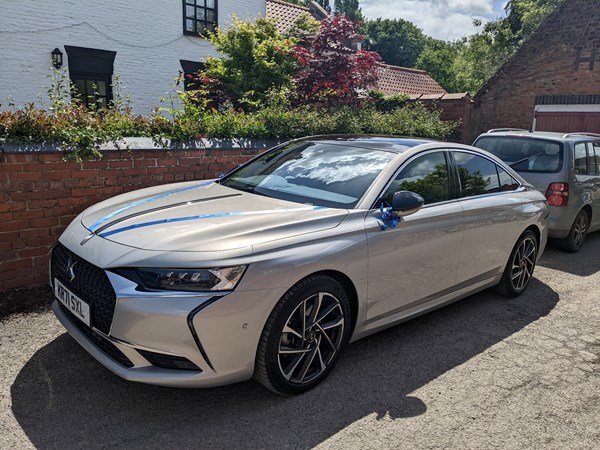
When our friends Jade and Scott asked me to be the driver for their summer wedding in York, the first task was finding a car that was up to the challenge. My Focus, despite its Vignale trim, simply wouldn’t cut it as the back seats aren’t big enough to house a beautiful bride in her full wedding dress.
Luckily, Keith Adams very kindly agreed to let me have the keys to the DS 9 instead. This unusual large saloon appeared to fit the bill really well, but would reality live up to my expectations on this high-pressure mission?
First, let me start by explaining ‘unusual’: I say that because I’ve never actually seen one on the road. In fact, where I live, DS cars are an incredibly rare sight in any guise.
But in my experience that’s no measure of the quality of the vehicle, and I’m going to say right now that the ‘9 performed perfectly for the task it was intended.
That glittering silver paintwork helps. It exudes quality before you’ve even got close to the vehicle, and complements the styling and large wheels nicely. My Very Important Passengers had formed their impression from the other side of a kitchen window: ‘that’ll do nicely, thank you,’ said Jade’s Dad.
So, off to a great start. I’d previously applied the all-important ribbons and moved the electric front seats forwards far enough for Business Class legroom. Opening the door to introduce Bride-to-be to the interior, it was the quilted leather upholstery that drew her eye, along with the middle seat armrest I’d lowered so she had some cupholders at her disposal. I was expecting Prosecco, you see, but alas she’d decided against that at the last minute.
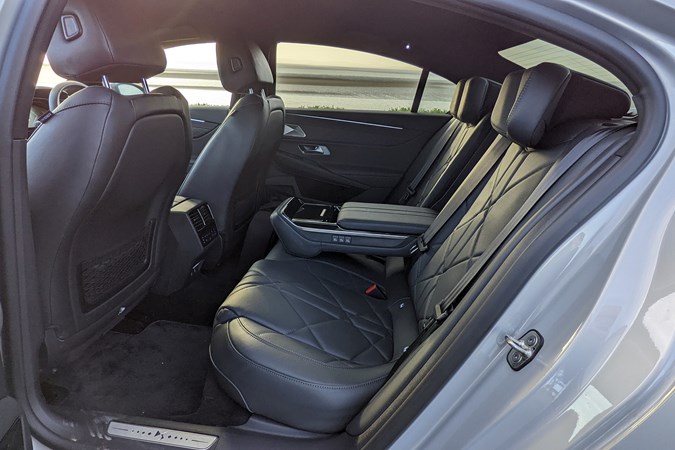
What she did do, however, was take full advantage of a massaging back seats to relax her as I pulled away from her parents’ village towards the centre of York. I’d put the car into Comfort mode for the drive to the Registry Office, and was eminently thankful for the smooth automatic gearbox and near-silent running thanks to the quiet petrol engine and electric motor combination in this plug-in hybrid.
The DS 9 was a joy to drive slowly. Its predictable, light steering has enough lock to nip in and out of city traffic and dodge pedestrians and parked cars, which was welcome given it was Race Day, and horseracing fans were literally everywhere. The massive screen helped too, as everyone in the car could see where they were going. I had Google Maps on the screen via Android Auto, which meant I didn’t need directions and my passengers could simply relax, or manage their nerves…
Still, we pulled up by the kerb of the Registry Office in plenty of time, I whipped around to open the door for the Bride (might as well go the whole chauffeuring hog, eh?) and we were set for a wonderful ceremony.
After photographs around the city’s famous ancient walls it was time to make our way to the reception venue, and this time I had Bride and Groom on board, while Father-of-Bride made his own way there.
We took it nice and slowly, stopping for a cooling drink along the way as the sun was beaming down on them and temperatures were up around 25 degrees centigrade. The four-zone climate control came to the fore here too, with each passenger able to control the heat to their liking.
Dropping them off at the reception and heading back to my hotel to drop off the car, I had a chance to reflect. The DS 9 was brilliant for this job. It’s comfortable, smooth, well-appointed and manoeuvrable, which ticked all the boxes as far as my VIPs were concerned.
I’ll leave it to Keith to review how the ‘9 drives, and what it’s like to live with this little limousine day to day, but I’m very thankful for the chance to use it for such a special occasion. If I ever do see another on the roads, it’ll conjure nothing but good memories.
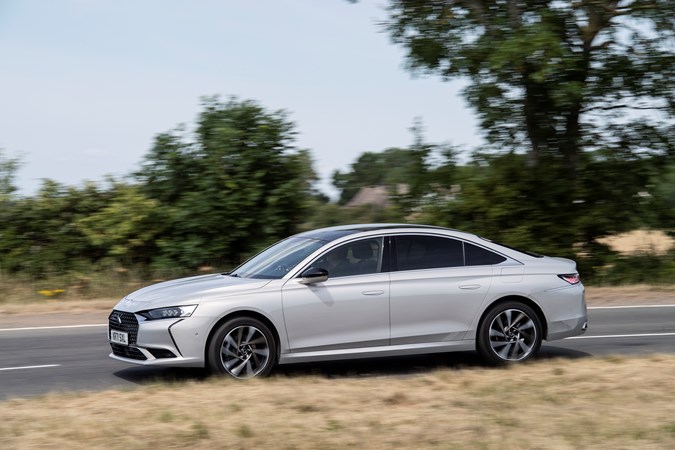
By Gareth Evans
Update 4: Long-distance impressions, 4,000 miles on
Keith’s been racking up the miles, and has been really enjoying his time behind the wheel…
The whole point of a large and comfortable saloon is to whisk its occupants over great distances with the minimum amount of stress possible. So, when it came to a number of business (and personal) trips which involved long stints on the motorway, as well as foreign travel, I ruminated for, oh, about a millisecond before taking the DS.
I won’t bore you with the details of it, but I needed to attend an international launch of a new car in the Alsace region of France, and rather than flying, chose to drive. There were a couple of reasons for this – air travel isn’t exactly pleasant or reliable right now, and as someone who’s trying to cut down their carbon footprint, driving makes a great deal more sense.
But as time is tight, and I don’t have the luxury of an extended schedule just because I’m driving, I needed to do the outward and return journey in one shot, and take the Eurotunnel to best maximise my time. So, leaving my home in the East Midlands mid-morning, I headed to Kent, with a view to getting on the tunnel by lunchtime and on to my destination hotel by 10pm. As it happened, it was one of the hottest days of the year, and as always, a crash at Dartford scuppered my plans, putting me back a couple of hours.
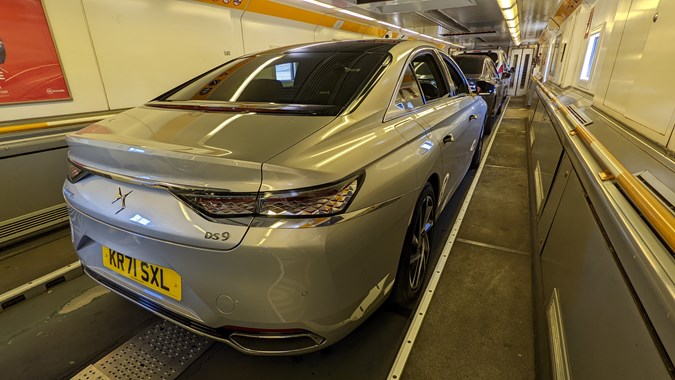
Boarding the tunnel early afternoon, and with an estimated arrival time in Colmar of 11pm (instead of 9pm), I settled down and concentrated on covering distance. The good news is that the DS 9’s driver’s seat really is very supportive – and the massage function really does keep aches and pains at bay. The smooth ride and low overall noise levels never cease to impress – so much so, that as I pushed into France, and despite all the traffic horrors on the English side, I was still completely chilled.
Another stoppage just south of Calais added another 45 minutes to the journey, and as I looked around at the stressed people around me, sweltering in their cars, I thanked the DS for keeping me in the right frame of mind for the long journey still ahead. As it happened the remaining 400 miles of the outbound trip were reeled off in five hours, and when I arrived at the hotel, I was still pretty composed and pleased that as well as benefitting from those great seats and excellent refinement, I was impressed by the performance of its auto-dipping headlights.
A full day’s work was completed, and by the following lunchtime, I was on the road again in a reversal of my outbound trip. Loving being able to drive around Colmar on battery, and was surprised at the thumbs-up and general positivity from French drivers, too, who obviously appreciated seeing an example of their national flagship being driven in the wild.
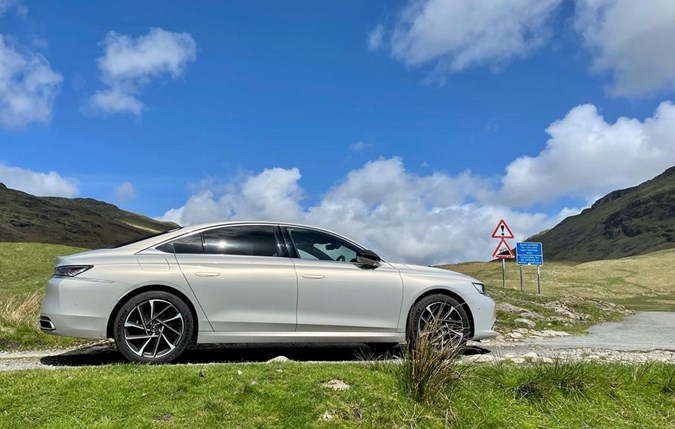
Without hold-ups this time, I was tucking into coffee and toast back at my place by that evening, having enjoyed the benefits of not flying and really getting to know my DS 9.
Thoughts? Well, the fuel range isn’t long enough. It has a measly 40-litre fuel tank, which despite its reasonable economy, needs refilling at 300 miles. That’s probably okay for most, but I prefer to go longer between fuel stops, especially on overseas trips on lightly-trafficked autoroutes. Also, adjustable lumbar support needs pumping up again after every restart – a minor annoyance, but an annoyance nevertheless.
But on the positive side, the impressive comfort and refinement really does mean you make light work of long trips. Low noise levels, especially, mean that fatigue really isn’t a factor for any sensible driver. The stereo sounds great, and the adaptive cruise control works well in these situations, too, maintaining its gaps smoothly, and rarely putting a foot wrong.
The DS 9 is definitely in its element on these long trips – and is doing a great job of worming its way into my affections.
Update 5: French, rare and precious
Keith’s been racking up more miles and the DS 9 continues to wins hearts and minds…
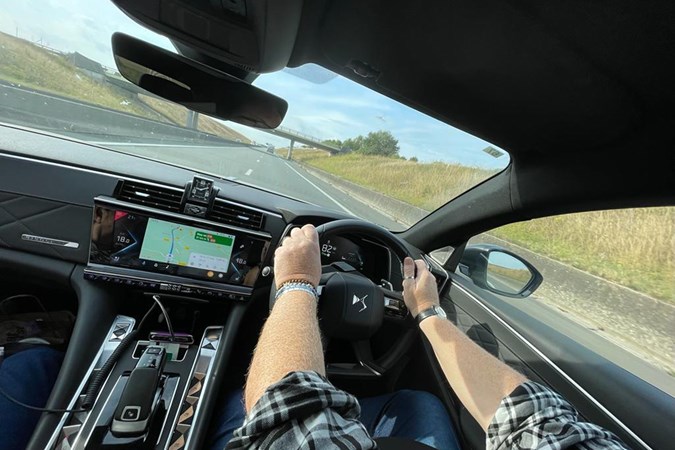
The DS 9 has been racking up miles, doing what it does best by whisking us on a bit of a whistle-stop tour of the Alps. A break from work saw me heading for southern France via the Eurotunnel, and relishing another opportunity to pile on autoroute miles in a car eminently suitable for the task. In the end, we racked up 3,000 miles in 12 days on the continent, taking in France, Andorra, Spain, Switzerland, Germany, Luxembourg and Belgium…
Let’s get the practicality stuff out of the way first – although the boot is hampered by the battery pack beneath the floor, it was long enough to swallow three people’s luggage for the trip down (aside from a cooler box), and deliver lounging room for the lucky passenger. However, on that, not all was milk and honey back there, as our guest couldn’t independently control their temperature in the rear – leaving an annoying balancing act of either being too warm in the front, or rather chilly in the rear. First world problems.
Once again, the DS 9 impressed on the motorway, although its short range was less of an issue with passengers who required regular stops. Without battery assistance, the thirst settled down to around 35mpg, which I’d say is okay, rather than good. The sting of which was rather taken away by fuel in France, which comes in at a mere €1.40 per litre.
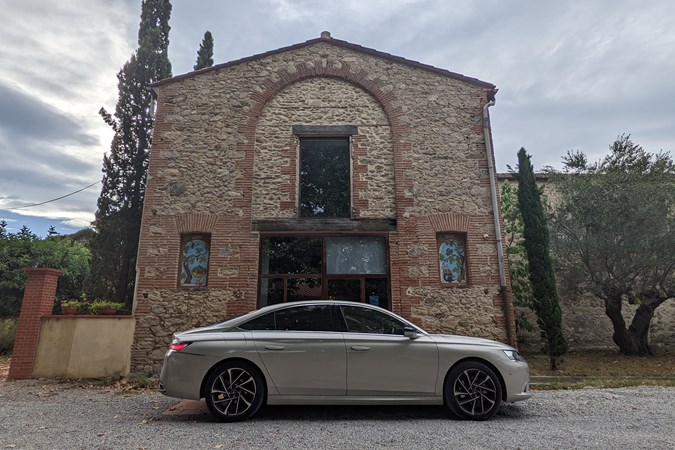
There’s not too much to add to the car’s positives and negatives already spelled out above, but an intermittent indicator failure was interesting, especially as the car’s fully LED lit. Some interesting notes – taking the car over the 8,000ft Furka Pass in Switzerland saw the battery pack almost fully charged on the descent, and careful management of that ‘free’ energy certainly improved overall fuel consumption from that point.
There have been some comments from various members of the Parkers road test about the DS 9’s lack of body control, but I can’t say it bothered me at any point in the Alps or the Pyrenees – and can only assume that’s down to the Europeans’ ability to surface a road better than us Brits. I found the DS 9 turns in incisively (in Sport mode), and does so without too much bodyroll.
By the time we returned to British soil, I was more convinced than ever that the DS 9 is a likeable thing, packed with personality and exclusivity. The latter is certainly true. In all of my time spent in Europe in the DS 9, I didn’t see another one on the road. Not on the autoroute, not in Luxembourg, not around Paris. Nowhere. Now that is rare!
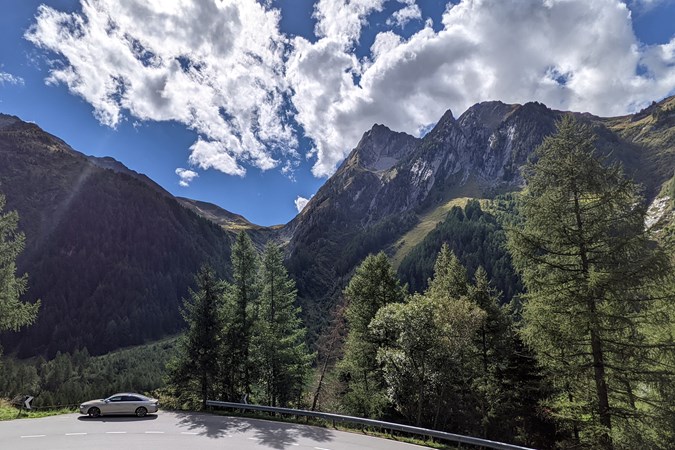
Update 6: Getting it serviced
It’s been serviced – and the experience leaves Keith disappointed…
While I was away, the service light came on. It’s been an interesting experience, because if you’re after a premium experience, it feels like DS might not be there yet. The disappointment began with the booking-in procedure, which needed to be done by telephone.
When I got through to the central call centre, they didn’t know what a DS 9 and initially insisted it didn’t need servicing yet. However, once accepted it did , they agreed for me to come in and leave it for the day so it could have its first service and recall work completed. As it was a last-minute appointment, no courtesy car was available, and as I found out later, getting a lift in was a very good idea.
Dropping it off at the service centre, part of the large out-of-town multi-marque dealership, was also interesting. Firstly, there was nowhere to park, so I had to leave it with a bunch of vans in the commercial service area. Secondly, I waited for 30 minutes for them to find my car and the booking on the system.
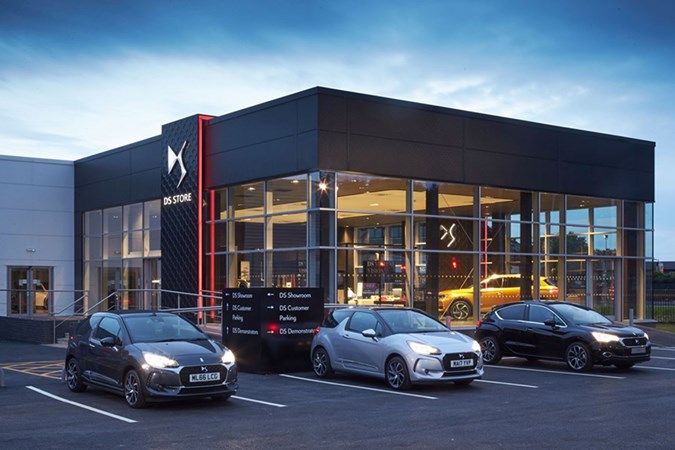
Thirdly, the technician dropped the bombshell that it would need to be in for two days, as they’d need to go to town on it. No issue, as I’d not arranged to wait around (good thing, as there was no waiting area), and would just leave them to it.
In the end, the car was in for two full days, and I ended up being without the DS 9 for three days, as it was on the third day of it being in that they called me to say it was ready for collection. When it came to collection, the service receptionist told me that some of the recall work hadn’t been completed as the parts weren’t in, and it would need to come back in.
This all felt very ordinary and not what I was expecting for a product of a company with aspirations to join the premium set. Had it been a BMW or Audi, I’d have been offered a coffee, had somewhere to wait, and been called by my first name, and been given service suitable for a car costing £50,000.
What DS had to say
A spokesperson for DS was refreshingly honest about the situation, and said that this was not up to scratch before explaining that there were mitigating circumstances.
They said: ‘Being totally transparent, the simple explanation is that there was a totally new service team at Leicester, and as a result of awaiting one more recruit, the general manager hadn’t assigned each of the team to a particular brand. As a consequence, the DS Brand training hadn’t been done hence the poor knowledge.’
They added: ‘One team member was sick on the day – they should have walked you through to the DS showroom and you had your full experience there. With a full team, the whole experience would be in the DS Showroom. This is most of the time, but not all of the time in the real world v’s head office vision of 100% of the time.’
Update 7: Verdict – what did we find?
After six months behind the wheel of the DS 9, how did we find the elegant French flagship to live with? Keith Adams spills the beans.
Long story short – if you’re going to buy a luxury saloon, the DS 9 lives up to the brief. It has a cossetting interior and is a comfortable long-distance cruiser. But there are issues.
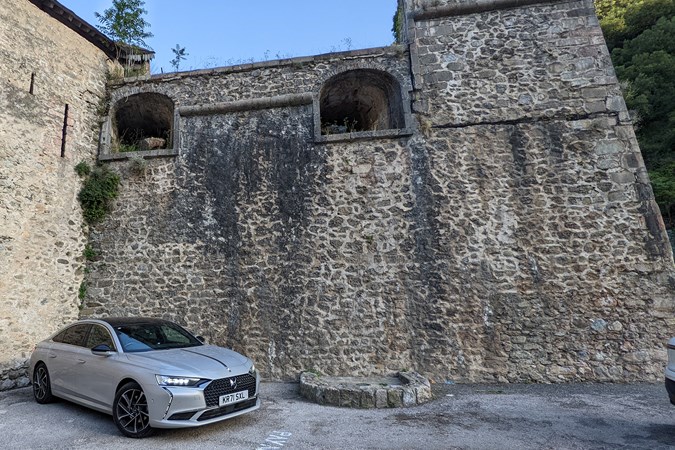
During the six months I had the pleasure of driving the DS 9, it impressed and frustrated in equal measure. Its styling is an elegant diversion in a world of bulky SUVs, and interior is a masterclass of trims and materials. It’s quiet and comfortable on the motorway, and on the right back road and in Sport mode, it can also be quite fun, thanks to responsive steering and decent amounts of grip.
It’s far from perfect, though. Take it on long runs, don’t keep it topped up with volts, and you’re looking at an average fuel consumption figure of 30-35mpg. Okay, but not exceptional. The infotainment is elderly, limited, and feels like a five-year old system – which it is.
The fuel range on long trips is rubbish, too, because of its 40-litre tank, and let’s be honest here – it’s expensive to buy, eye-watering to finance, and resale values look very shaky indeed. According to our valuation tool (based on industry data), at around a year old and sold privately, our test car has lost more than £20,000, assuming you paid full list price, when new.
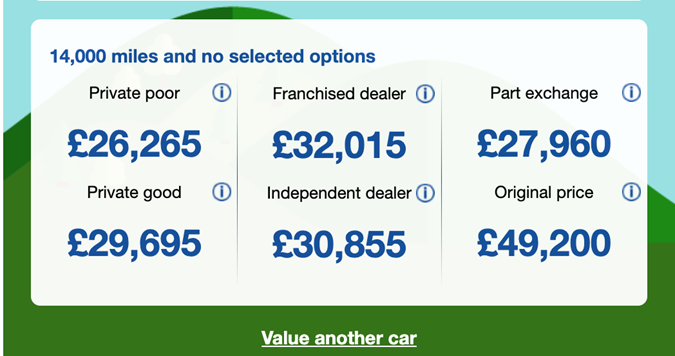
So, the DS 9 is a heart versus head purchase. It’s classy and stands out in a market dominated by the Germans, and does a great job of cossetting you. And most importantly, if you’re a non-conformist like me, it’s excellent at making you feel special. But it’s a tough car to recommend on any rational basis right now – the later 250 and 360hp models with their improved range, performance and tech stack up better, but still have some catching up to do.
However, I can see myself owning one of these in a few years’ time as a used car bargain.
| Latest DS 9 Tivoli+ E-Tense 225 – Running costs |
|
| Current mileage | 16,870 |
| Real-world average fuel economy | 34.7mpg |
| Official combined fuel economy (WLTP) | 235mpg |
| Joined Parkers fleet and start mileage | 29 April 2022 [6,050miles] |
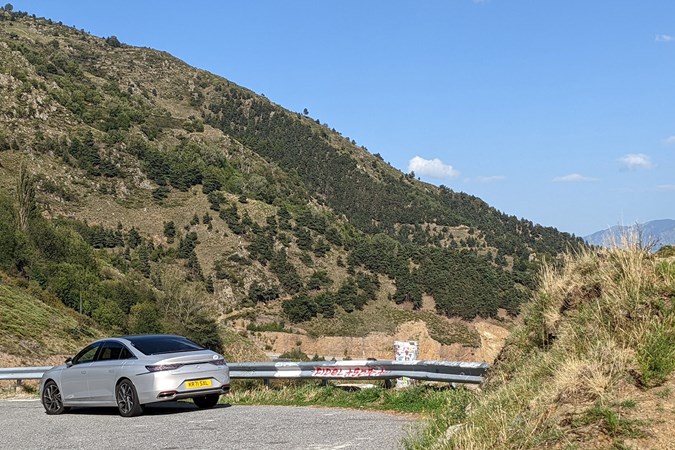




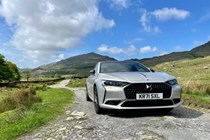
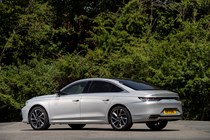
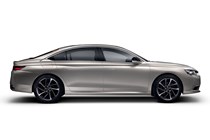
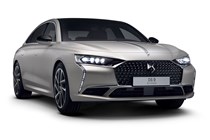
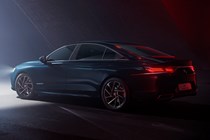
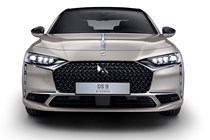
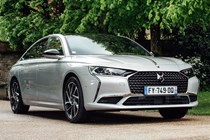
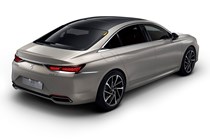
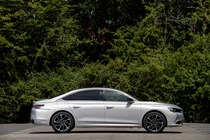
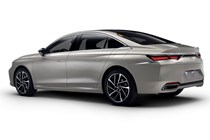

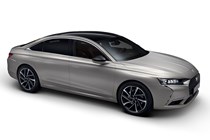
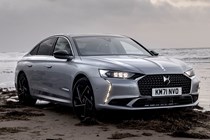
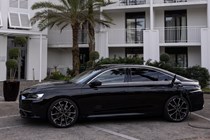
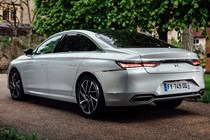
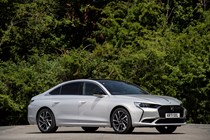
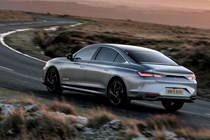
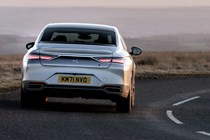
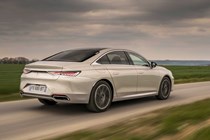
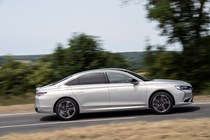
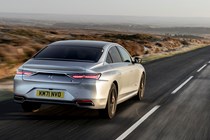
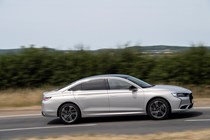
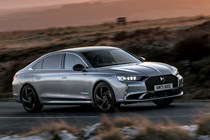
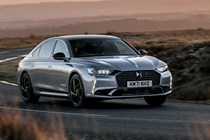
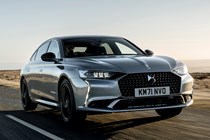
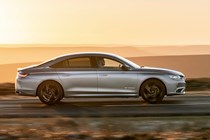
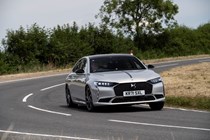
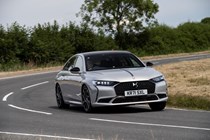
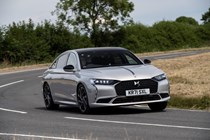
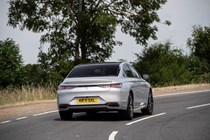
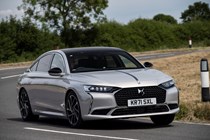
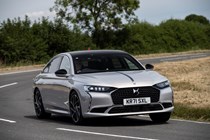

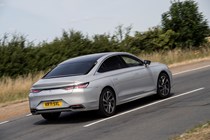
.jpg)
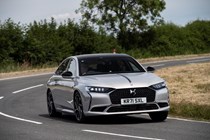
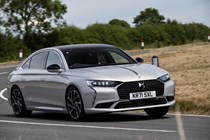

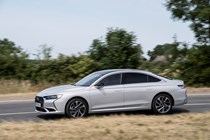

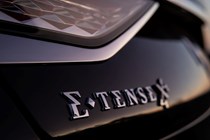
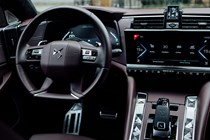
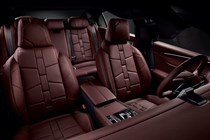
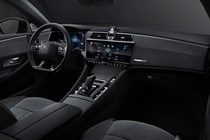
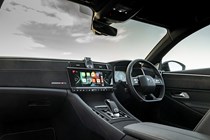

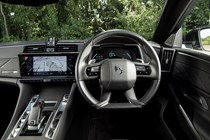

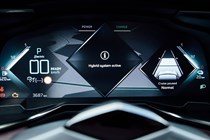
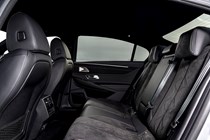
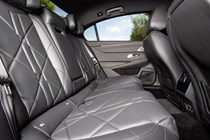
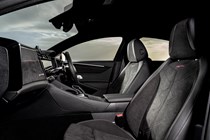
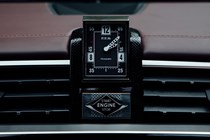
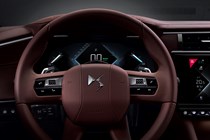

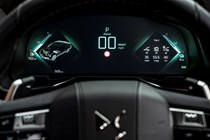

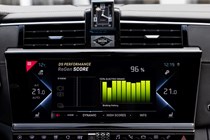
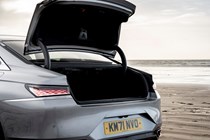
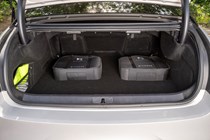






































.jpg?quality=50)
























